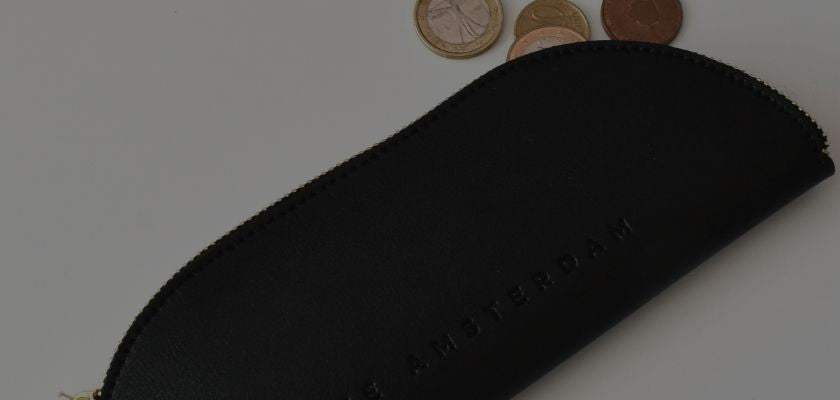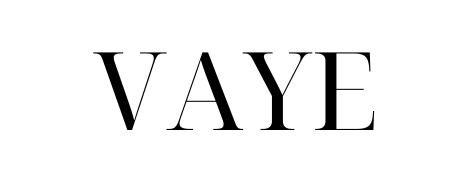
Budgeting for Beginners: A Step-by-Step Plan to Start Today
Share
Budgeting might sound boring or complicated, but it doesn't have to be! It's essentially a way to get a handle on your finances—a plan that helps you spend your money in a way that suits your lifestyle. And the best part? Anyone can learn it! Whether you want to save money, pay off debt, or simply gain a better overview, this step-by-step plan will get you started today.
Step 1. Get an overview of income and expenses
Before you can create a budget, you first need to know where you stand. What's coming in and what's going out? This might sound obvious, but it's surprising how few people know exactly where their money goes.
How do you get an overview?
-
Record all your income and expenses for a month. Yes, everything. From your rent or mortgage to that cup of coffee on the go.
-
Use a budget planner to keep everything organized. Vaye Amsterdam, for example, has handy planners that can help you with this.
-
Want more control over your spending? Consider using Cash Envelopes . This is a system where you physically separate your money into categories (e.g., groceries, bills, outings). It works simply: once the money in an envelope runs out, it's gone!
This first step lays the foundation. You know exactly where your money goes, and that gives you a sense of control.
Step 2. Set financial goals
Now that you know where your money is going, it's time to set goals. What do you want to achieve? Do you want to save for a vacation? Pay off your credit card? Or maybe just stress less about money?
Short-term and long-term goals
- Short term: These are goals you can achieve within a few months, such as building an emergency fund.
- Long term: These are larger goals, such as buying a house or saving for retirement.
Make your goals concrete and measurable. Instead of "I want to save," you could say, "I want to save €1,000 for my vacation within six months."
Tip: Use Savings Challenges to make saving more fun and easier. For example, the 52-Week Savings Challenge , where you set aside a certain amount each week.
Step 3. Create a simple budget
Now for the real work: creating a budget. Don't worry, this doesn't have to be complicated. A popular method for beginners is the 50/30/20 rule :
- 50% of your income goes to fixed costs (rent, mortgage, insurance, etc.).
- You may spend 30% on variable costs (groceries, outings, clothing).
- You use 20% to save or pay off debts.
How do you keep everything organized? With a Budget Binder ! This is a folder where you can organize different categories, such as fixed expenses, savings, and variable expenses. Vaye Amsterdam's binders are specially designed to make your finances clear.
You can also use envelopes in your budget folder to visualize your expenses. For example, put €100 in an envelope for groceries, and you'll know exactly how much you have left.
Step 4. Stick to your budget
Creating a budget is one thing, but sticking to it is a whole other challenge. The good news? With a few smart tips, you'll definitely succeed.
Make it a routine
- Schedule a fixed time each week to review your finances. See what you've spent and whether you're still within your budget.
- Use accessories like a calculator or a transparent piggy bank to track your progress. At Vaye Amsterdam, you'll find handy tools that make this process a lot more fun.
Be flexible. Life is unpredictable, and so are your finances. Make sure your budget is flexible enough to absorb unexpected expenses. Have a month where everything goes wrong? Give yourself some leeway and simply start over next month.
Step 5. Evaluate and adjust
Your budget isn't a static document; it's a work in progress. Therefore, take time regularly to evaluate your budget. What's working, and what's not?
How often should you evaluate?
- Monthly: Look back at the end of the month and adjust your budget if necessary.
- Quarterly: Take a bigger step back and see if your financial goals are still realistic.
Stay motivated. Budgeting can sometimes feel like a drag, but it doesn't have to! Try finding new ways to keep it fun. For example, start a new savings challenge or reward yourself for reaching a goal.
Budgeting FAQs for Beginners
1. Should I use cash? It's not necessary, but it can help. Cash gives you a tangible sense of what you're spending, and tools like cash envelopes make sticking to your budget even easier.
2. What if I don't reach my goals? That's okay! Budgeting is a learning process. Analyze what went wrong and try again. Every little step counts.
3. How do I make budgeting fun? Use fun tools and accessories, like a budget planner or a piggy bank. And don't forget: the feeling of control over your finances is the biggest reward!
Conclusion
Congratulations, you now have everything you need to start budgeting today! Remember: it's not a race, but a process. With the right tools and a little discipline, you can take control of your finances and achieve your goals.
Want to get started right away? Check out the Budget Planners , Cash Envelopes , and other helpful tools . Start today and discover how fun (and effective) budgeting can be!
